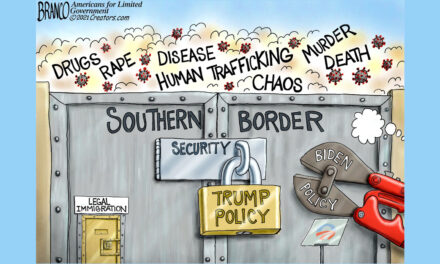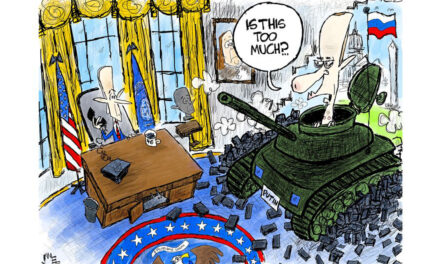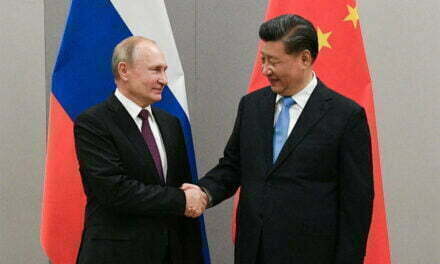
Horist: Working from home has been my life

I recently realized that I have been a person ahead of my times. I have worked from my home since 1975. I find it almost impossible to believe that it was 47 years ago that I first set up an office in my basement family room. I had one phone and a table lamp on a dropleaf table. In terms of equipment, I had a portable manual typewriter and a cheap copying device that used a light bulb to make copies on heat-sensitive paper.
In the seven times I moved in subsequent years, the new domicile had to have room for a real workspace – including a private office, staff area and conference room. Of course, my office equipment upgraded to multi-function copiers, computers, tractor-feed printers, video equipment and multiple phones with multiple lines. The workforce later included my wife, two or three permanent staffers, part-timers, interns and outside contractors.
Thanks to Skype, I could hold conversations and virtual meetings with folks anywhere in the world. When I started the business, a brief call to China was extremely difficult and very costly. With the new technology, I could talk to a Chinese business associate – face-to-face – for unlimited time at no cost.
It now seems that the Covid Pandemic has forced a surge in “working at home.” But it does take a certain amount of discipline – and is not right for all people in all employment situations.
I found that it required a designated workspace away from the main family environment. It was as much psychological as physical – although a place with a door is best. In my case it was more expansive than most because it was the center of my business with staff, clients and others coming and going.
Since space was limited, I ran my business on a project management basis. I would hire from outside whatever human resources I needed to complete a project. In one case, I had more than 400 people on my “payroll” – well actually the client’s payroll.
I made the decision to keep the enterprise at home for several reasons. The first was personal. I liked being around the kids. I would see them after school – maybe even taking a break to go out for ice creams or a matinee movie. I was almost always home for dinner. I could read them bedtime stories and return to the office for a couple of hours. It was just a different way to slice up the hours.
The other major reason was cost. Since soliciting clients is very competitive, I could offer lower rates to clients based on my low overhead. Many times over the course of years, I beat out major consulting firms based on rates. I was a very small company with a lot of very large clients.
Then there’s the joy of almost never facing rush-hour traffic. I could be in my office within minutes of getting out of bed. I laughed when the Census Form asked my commute time each day. I put down “one minute.”
There was also an ancillary benefit for the kids. They had immediate access to all the supplies and machinery they would need for any assignment – multi-color paper, pencils, notebooks, glue, tape, folders, binding machines. They turned out some very impressive school report and creative projects. Occasionally, I would “hire” them to help out – like stuffing envelopes (before email) or making multiple copies.
Another advantage is the dress code. If I did not have any meeting on the schedule or was heading to a luncheon, my basic attire was Levis and a t-shirt. I was ahead of Mark Zuckerberg and Elon Musk by decades.
Right now, I am sitting in the home-office writing this commentary – looking out my window at the beautiful … oh … it’s raining.
I can well understand why so many workers, who have been operating from home because of the Pandemic, are reluctant to go back to the office.
So, there ‘tis.



























“Working”
How hard is it to regurgitate Fox talking points?
Ben … Keep in mind that my job requires that I put up with the obsessive and mendacious “slings and arrows” from folks like you.
Some guys just can’t be with other people. :>)
I applaud you our pioneer in WAH. I find it a mixed blessing, get a lot done, save the commute, but miss the networking which, if you work for the Fortune whatever, can be important not only for teaming but for your future. I didn’t start as early as you; I was too young to work :>) but I started as a consultant with most clients being Japanese, Taiwanese, but also France, Belgium, UK, Spain, and even Canada, the only international trip in those young days :>( My teams have always been scattered, often across the globe and so, WAH was a natural. Plus we were rolling new inventions that targeted mobile communications of all types and sizes so good to “eat your own dog food.” I was doing email in my car driving at 70mph in those days. But I felt more was needed. One of my peccadillos was to meet in the time zone of most attendees. I could often be starting at 3am which tends to support WAH but not the family….But I still needed a bit more.
I found that WAH support from management is like the substitute teacher who says “let’s just do what you think is right: and after seeing the unintended consequences, issues the “OK, I tried to be your friend, now we will…….” IOW — WAH support starts gung-ho, but often it’s just a matter of time until somehow management feels it’s more productive not to WAH, probably because it limits “management by walking around.” I have seen it wax and wane a few times. So I wanted to make sure we have the best of all worlds, wanted folks to say: “yeah, I know him real well, we’ve hung together” and mean it.
Like I said, my teams were often global, my “office” could be in a airport conference room, in the air, at another facility, or at home. I also ended up with some temporary offices which often were VP level in that those vacancies sometimes left office space that on-site people could not use due to protocol, but visitors —- no problem. Those were sweet, but again, usually like once a week. Used them to “walk amongst” them often just to say hi, how’s the family, again, building those personal relationships in a way that only face-to-face can do. Because I knew, that sooner or later, the shxt would hit the wall and I would be asking folks to do things they just would rather not do. To exceed and excel if for no reason but to stay on track. People really need to know you at those times. I think WAH does not do it for that.
Another peccadillo was to have face-to-face one time or on rare occasions with the entire team, especially upfront, just because it makes the remote better to actually team face-to-face on occasion. For these, we didn’t use corporate facilities so we could maintain our remote environment, but met often in an airport conference center. Often that facility was cheaper than corporate, go figure. O’hare was a favorite because of location, accessibility and difficulty getting to Clark Street :>) So we would fly in, have dinner, often catered at the airport, and a party, sleep as little as possible, meet uber early so that we could fly out in the pm. I found attendees to be very positive after a party, a late night, and an really early start. Inhibitions down, comfort level up, creativity abounds!
And a last hallmark, I would always “build in” via formal budgeted item, a “planning session” close to completion for the next release. I would offer management that IF we meet schedule and cost goals, we would “plan” in some really nice places like Beaver Creek over the pass from Denver. Went off season to control costs, met again at crack of dawn, but stopped at 3pm for activities like sledding, biking, etc, followed by something like an evening catered bbq. Actually did get some fine planning done, but more important, melded a diverse, geographically separated group of type a’s, into a very loyal team. That was priceless. And fun.
So, I applaud your remote pioneering, I had a couple of twists, mostly as a manner having some face-to-face if for no other reason, but to build team bonding relationships to make working remote even better. And I found fun to be very productive in the long run. I usually didn’t have a formal office, but many temporary offices and conference rooms because sporadic face-to-face helps WAH succeed, with teams, IMO.